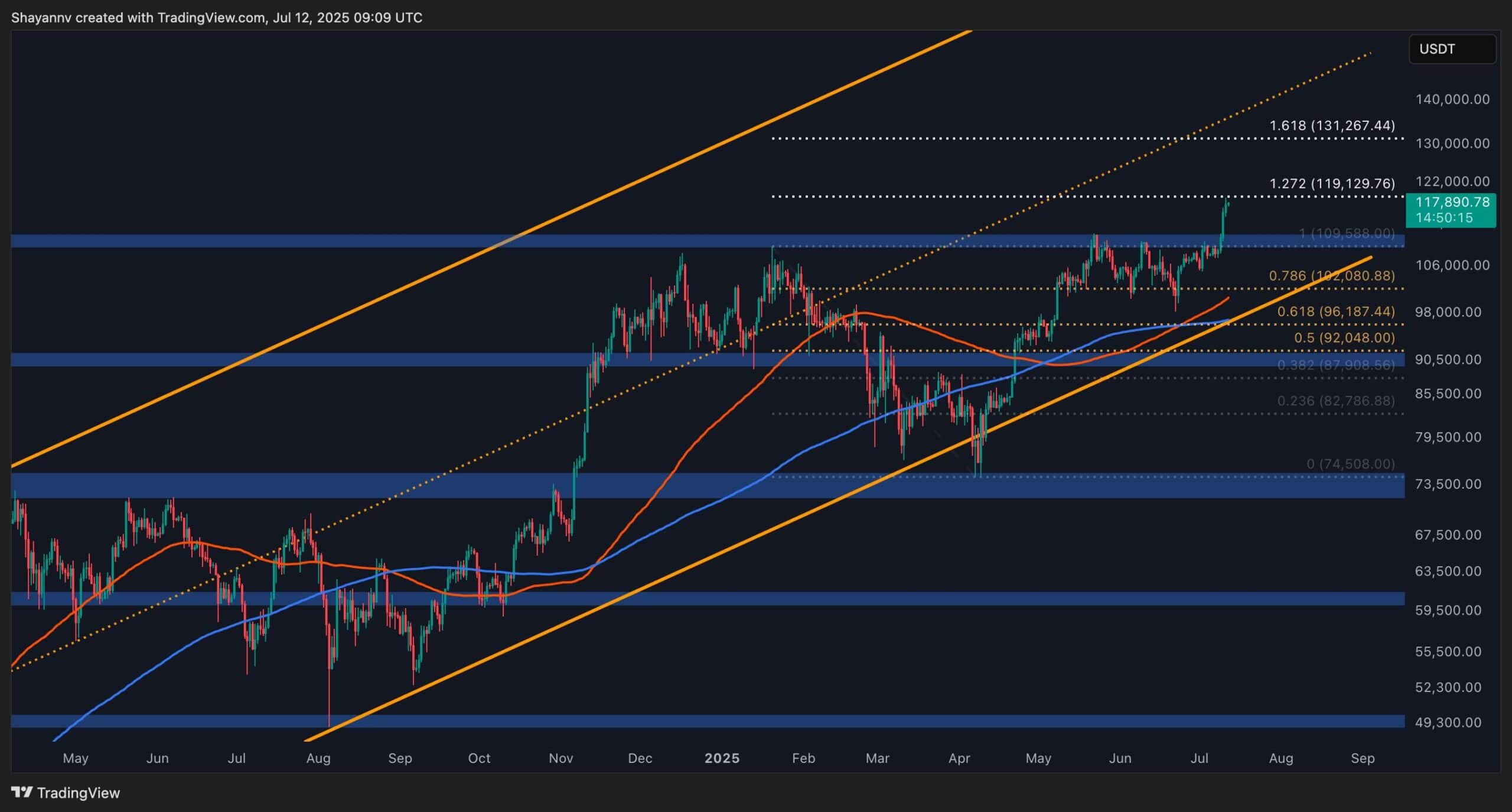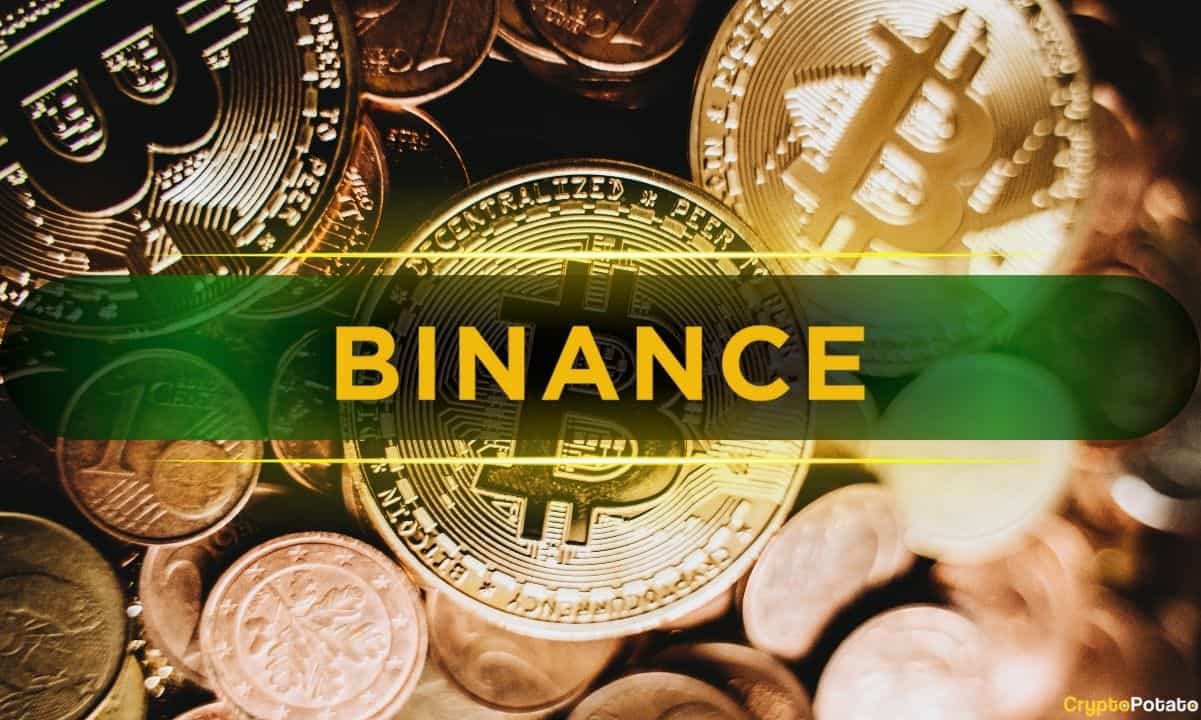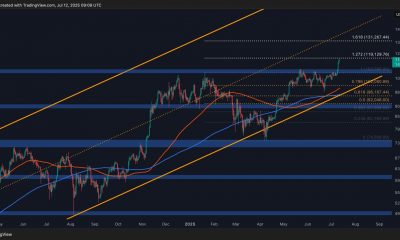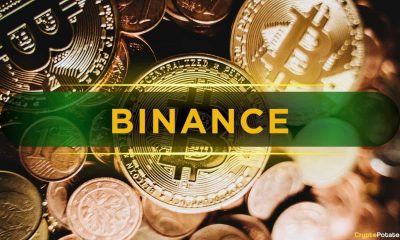Cryptocurrency
Understanding crypto custody: What different solutions entail for investors and businesses

As crypto continues to cement itself into our financial system, the question of custody, or how individuals and entities should hold their assets, is becoming increasingly important. This is especially true following the fallout of multiple centralized platforms last year, such as FTX and Gemini, which caused many investors to lose their crypto holdings.
The ethos of crypto is decentralization and ownership. Because third parties are effectively cut out, individuals have direct control over their funds. They don’t need to trust middlemen, such as banks or other centralized financial entities, to properly manage their assets.
However, this complete control is often somewhat sacrificed when the question of storage comes into play. There are two types of digital wallets for storing cryptocurrency, custodial and non-custodial wallets, and each have their unique advantages and disadvantages. The primary difference between the two lies in the control and custody of the private keys, which are the cryptographic codes that enable cryptocurrency transactions. Generally, custodial wallets are less safe but more convenient, while non-custodial wallets are more secure but less convenient.
Selecting between the two is a tricky tradeoff, but it is important that users, investors and institutions have a fundamental understanding of how each option works and the associated risks before deciding how they want to store their assets.
When investors choose to use non-custodial wallets, also referred to as self-custody, they have total control over their private keys and by extension, total control over their assets. Self-custodying is in essence the ethos of crypto — there is no counterparty risk. Full ownership gives investors the flexibility to exchange their assets wherever and however they choose.
By self-custodying, there is no risk of a third-party provider getting hacked, going bankrupt or disappearing, which provides a level of security by removing external dependencies. Furthermore, since there is no third-party involvement, transactions can be more private (depending on the blockchain used).
With custodial wallets, users put their assets in complete control of a middleman or service provider who has complete control over the private keys. This poses many security risks and increases the likelihood of loss of funds. It can also result in access limitations, as exchanges may freeze access to funds due to legal issues, policy violations or technical problems.
Even the most high-profile cryptocurrency exchanges have not been shielded from these issues. Many have been targeted and successfully hacked in the past. And if recent collapses like that of FTX have shown us anything, it’s that some firms have also been both reckless in managing customer funds or susceptible to full-blown bankruptcies. Users who custodied their assets on FTX lost tens to hundreds of millions of dollars.
So then, why do investors still choose custodial over non-custodial wallets? Custodial wallets are typically easier to use, especially for newcomers, as they often come with a user-friendly interface. Those offered by exchanges often provide more services, such as trading, borrowing, staking or rewards services. Additionally, many custodial providers have recovery options so if you forget your password or lose access to your account, there is usually a way to recover it because the service provider maintains control of the keys.
Whereas with self-custody, individuals are responsible for maintaining their private key. There is no password reset. Misplaced private keys may mean total irrecoverable loss of funds. Lastly, certain custodial providers offer insurance solutions to mitigate certain counterparty risk.
As users assess the pros and cons between both solutions, there are additional factors that have become increasingly relevant given recent market investors. When users deposit their crypto on a centralized exchange, they are essentially “loaning” their crypto coins to the exchange, in turn making them unsecured creditors. In doing so, they give the exchange the power to use those funds at its discretion, meaning the funds may be used as collateral for large loans, trades, etc.
Assuming these exchanges use the funds as intended, implement risk management strategies and keep careful records to inform next steps, they offer a convenient and theoretically safe avenue for investors to hold their crypto. Unfortunately, FTX has proven that firms don’t necessarily abide by responsible standards, calling into question the integrity of centralized exchanges and the safety of custodial wallets more broadly.
Businesses can, in part, avoid some of these third-party risks by ensuring they select exchanges that are regulatory compliant, employ high-security standards and are transparent with regard to their funds and ability to collateralize assets. As greater regulation is introduced, there should be tighter safeguards in place to protect investors and their funds when they choose to trust custodians with their crypto.
Overall, businesses and individuals should constantly scrutinize their custodial strategies to ensure their funds are properly managed. One avenue could be to employ both types of custodial solutions for funds, keeping a very close eye on those that are held by custodians and ensuring they are properly diversified.
The information provided here is not investment, tax or financial advice. You should consult with a licensed professional for advice concerning your specific situation.
Anthony Georgiades is the co-founder of Pastel Network.
This article was published through Cointelegraph Innovation Circle, a vetted organization of senior executives and experts in the blockchain technology industry who are building the future through the power of connections, collaboration and thought leadership. Opinions expressed do not necessarily reflect those of Cointelegraph.
Cryptocurrency
Why Is XRP Pumping? Whale Moves $90M as Ripple Price Nears $3

TL;DR
- XRP jumps 80% from April lows as whales move over $200 million in large transactions.
- ETF volume surges 5x above normal as traders await ProShares’ XRP futures fund launch.
- XRP nears $3 as traders speculate on $4 breakout amid revived momentum and whale activity.
XRP Hits Five-Month High After 80% Climb
XRP has surged nearly 80% from its April lows and shot up to almost $3 for the first time in several months. The token has increased by 8% in the last 24 hours and 25% weekly, making it one of the strongest assets in the market this week.
Interestingly, the rally also marks a Bitcoin (BTC) breakout to a new record of $118,800, assisting in pushing up wider crypto prices. XRP has gained renewed momentum after months of muted movement, drawing fresh interest from both retail and institutional traders.
Whale Transfers Fuel Speculation
On-chain data shows several large XRP movements over the past 24 hours. Whale Alert flagged a 33 million XRP transfer (worth about $90 million) from Upbit to an unknown wallet. Another 40 million XRP, valued at over $100 million, moved between unidentified addresses, as CryptoPotato reported.
In a separate transfer, 25.49 million XRP were sent from a private wallet to Coinbase. The cause behind such transactions is not clear, but these movements are likely to precede or follow price action. The timing has added to ongoing market speculation around the asset’s next move.
XRP ETF Volume Spikes Ahead of Key Deadlines
Trading activity has also picked up in XRP-linked exchange-traded products. Bloomberg’s Eric Balchunas noted a sharp increase in volume.
“The XRP ETFs seeing surge in volume today, like 4-5x the norm,” he posted.
The 2x leveraged XRP fund ($XXRP) rose 27% on the day and 55% this week, with volume hitting $120 million.
The XRP ETFs seeing surge in volume today, like 4-5x the norm, especially the 2x one $XXRP, which is up 27% today, 55% this week with $120m in volume.. Teucrium rewarded for getting out early.. ht @Todd_Sohn pic.twitter.com/Bk8hsNFhW1
— Eric Balchunas (@EricBalchunas) July 11, 2025
As reported, ProShares plans to launch three futures XRP ETFs on July 14. These include Ultra XRP, UltraShort XRP, and Short XRP funds. The launches depend on whether the SEC allows them to proceed without objection before deadlines later this month.
Traders continue to watch the charts closely. Edoardo Farina, a crypto educator, said,
“It wouldn’t be surprising if market participants woke up to see XRP trading above $4.”
XRP has remained below its all-time high for over seven years, but current momentum has revived market expectations for a breakout.
Binance Free $600 (CryptoPotato Exclusive): Use this link to register a new account and receive $600 exclusive welcome offer on Binance (full details).
LIMITED OFFER for CryptoPotato readers at Bybit: Use this link to register and open a $500 FREE position on any coin!
Cryptocurrency
Bitcoin Price Analysis: Is a Correction Coming or Will BTC Break $120K Next?

Bitcoin has decisively broken above its previous all-time high of $111K, triggering a powerful bullish rally toward the key $120K psychological resistance.
However, as BTC approaches the $120K zone, profit-taking and distribution pressure may rise, increasing the likelihood of a short-term corrective pullback.
Technical Analysis
By ShayanMarkets
The Daily Chart
After a prolonged consolidation phase, Bitcoin has decisively broken above its previous all-time high of $111K. This breakout was backed by a notable surge in buying activity, triggering a short-squeeze that accelerated the bullish momentum. As a result, Bitcoin rapidly climbed toward the psychologically significant $120K resistance level.
While this move signals strong market confidence, the $120K region is a probable zone for profit-taking and distribution, which could temporarily slow down the rally. A short-term corrective phase is therefore expected, likely pulling the price back toward the $111K region to retest the breakout level. Based on the Fibonacci retracement tool, key resistance levels ahead are located at $120K and $131K.
The 4-Hour Chart
On the lower timeframe, Bitcoin printed a powerful bullish candle, decisively breaking above both the descending wedge pattern and the previous ATH at $111K. Following a minor pullback to retest the breakout zone, the price resumed its upward surge, reaching the $120K mark.
Such impulsive rallies are often followed by short-term corrections, as traders begin to realize profits. A healthy retracement would likely target the 0.5 ($113K) to 0.618 ($111K) Fibonacci levels, a key zone where the market may stabilize and build momentum for the next leg up.
On-chain Analysis
By ShayanMarkets
As Bitcoin trades at all-time highs near $120K, an intriguing insight emerges from the Short-Term Holder SOPR metric. This indicator, which measures realized profits from investors who’ve held BTC for less than 155 days, remains notably muted, especially when compared to November 2024, when Bitcoin first reached $111K.
Despite the recent surge, short-term holders aren’t cashing out aggressively, indicating that profit-taking is still relatively limited. Historically, the end of a bullish cycle is often accompanied by elevated SOPR values due to massive profit realization. But for now, the data suggests the market isn’t overheated, and the current rally could still have room to grow if new demand enters.
Binance Free $600 (CryptoPotato Exclusive): Use this link to register a new account and receive $600 exclusive welcome offer on Binance (full details).
LIMITED OFFER for CryptoPotato readers at Bybit: Use this link to register and open a $500 FREE position on any coin!
Disclaimer: Information found on CryptoPotato is those of writers quoted. It does not represent the opinions of CryptoPotato on whether to buy, sell, or hold any investments. You are advised to conduct your own research before making any investment decisions. Use provided information at your own risk. See Disclaimer for more information.
Cryptocurrency charts by TradingView.
Cryptocurrency
Binance Crushes Rivals: Grabs 37% of Global BTC Spot Volume in H1 2025

Binance led global BTC spot volume in the first half of 2025. CryptoQuant’s latest analysis revealed that the crypto exchange commanded more than 37% market share, which is equivalent to over $3.44 trillion in traded volume.
This significant lead evidenced Binance’s position as the primary hub for Bitcoin liquidity and major flow activity, as volume spikes and large trades often appear there first.
Competitors Lag Behind
Other prominent platforms such as Bybit, Crypto.com, Coinbase, and OKX collectively accounted for around 29% of total spot volume during the same period. Together, they formed the next tier of liquidity centers despite the wide gap with Binance.
Meanwhile, crypto exchanges such as Upbit, Bitget, and HuobiPro each hovered around the 5% mark. While they did maintain relevance in the global market, but had comparatively lower influence, as noted by CryptoQuant.
On the other hand, Kraken, KuCoin, and Gate.io, among other long-tail exchanges, each contributed less than 3% of total BTC spot volume and largely served niche or regional markets.
“Bottom line: If you’re looking for deep liquidity or want to track major BTC flow activity, Binance is still the primary exchange (by far).”
Beyond its spot volume share, Binance also dominates in whale activity.
Bitcoin Whales Won’t Leave Binance
In fact, CryptoQuant found that Binance has been leading in cumulative whale transaction flows across centralized exchanges. The exchange recorded a whopping 31.36 million BTC in whale inflows and 30.82 million BTC in outflows. This reflected not the total BTC supply but the sheer velocity and frequency of whale-sized movements (≥1000 BTC/day) over its operational lifespan.
Spread across 2,869 active days of whale inflows, Binance has facilitated over 53.2 million whale transactions. It has dwarfed competitors with 10 times Kraken’s activity and five times that of HTX. This massive two-way flow indicates Binance’s role not merely as a custody hub but as a trusted venue for large-scale, active trading, market-making, and arbitrage operations, confirming its depth and infrastructure as reliable for whales.
For context, HTX Global follows with 24.1 million BTC in inflows across 6.8 million whale transactions, while Kraken recorded 23.7 million BTC in inflows with 765,000 whale transactions. Other notable platforms include Bitstamp, Bitfinex, Gemini, OKX, and Poloniex, but none match Binance’s scale.
Binance Free $600 (CryptoPotato Exclusive): Use this link to register a new account and receive $600 exclusive welcome offer on Binance (full details).
LIMITED OFFER for CryptoPotato readers at Bybit: Use this link to register and open a $500 FREE position on any coin!

 Forex3 years ago
Forex3 years agoForex Today: the dollar is gaining strength amid gloomy sentiment at the start of the Fed’s week

 Forex3 years ago
Forex3 years agoUnbiased review of Pocket Option broker

 Forex3 years ago
Forex3 years agoDollar to pound sterling exchange rate today: Pound plummeted to its lowest since 1985

 Forex3 years ago
Forex3 years agoHow is the Australian dollar doing today?

 Cryptocurrency3 years ago
Cryptocurrency3 years agoWhat happened in the crypto market – current events today

 World3 years ago
World3 years agoWhy are modern video games an art form?

 Commodities3 years ago
Commodities3 years agoCopper continues to fall in price on expectations of lower demand in China

 Economy3 years ago
Economy3 years agoCrude oil tankers double in price due to EU anti-Russian sanctions



























